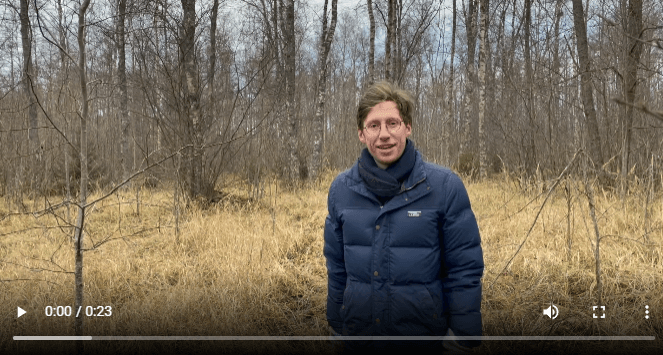This short note is a progress update, including videos and drone footage, on our aspirations to undertake a series of reforestation projects in Estonia. It covers considerations for selecting land; and our first small investment, which has been to clear out the dense thickets from a 5-acre parcel, to plant some spruce in 2022 and improve the carbon density.
Those who follow Thunder Said Energy research will know that nature-based carbon removals play a large role in our roadmap to net zero (below, around 20GTpa, or one-quarter of all global decarbonization). This is so important that I am trying to learn and stress-test the thesis. Including by undertaking my own reforestation projects in Estonia.
In the research note below from July, the strategy was laid out, to ‘crawl, walk, then run’. The ‘crawl’ phase mainly involves learning, and reducing my family’s net, lifetime CO2 emissions. The ‘walk’ phase involves undertaking what I would consider to be a proper reforestation project, that is undeniably incremental, measurable, trustable, long-lasting and bio-diverse (again, mainly for learning, and to offset my family’s entire lifetime CO2 emissions, multiple times over). The ‘run’; phase might involve replicating this at larger scale, and possibly even commercializing the CO2 removal ‘credits’.
Hence 2H21 has been constellated with trips to learn about Northern European forestry. This is not challenging in Estonia. Forests are part of the culture. In Western Europe, the forest is a dark place where bad things happen (think ‘Red Riding Hood’). In Estonia, the forest is where you go to hide from bad things happening. There are sacred forests, where you are forbidden from swearing or using a mobile phone (photo below). And there is even a national pastime here, picking mushrooms in the autumn. Many Estonians can somehow tell the difference between two near-identical fungi — one translating as “delicious wood champignon” and the other translating, more ominously, as “the angel of death”.
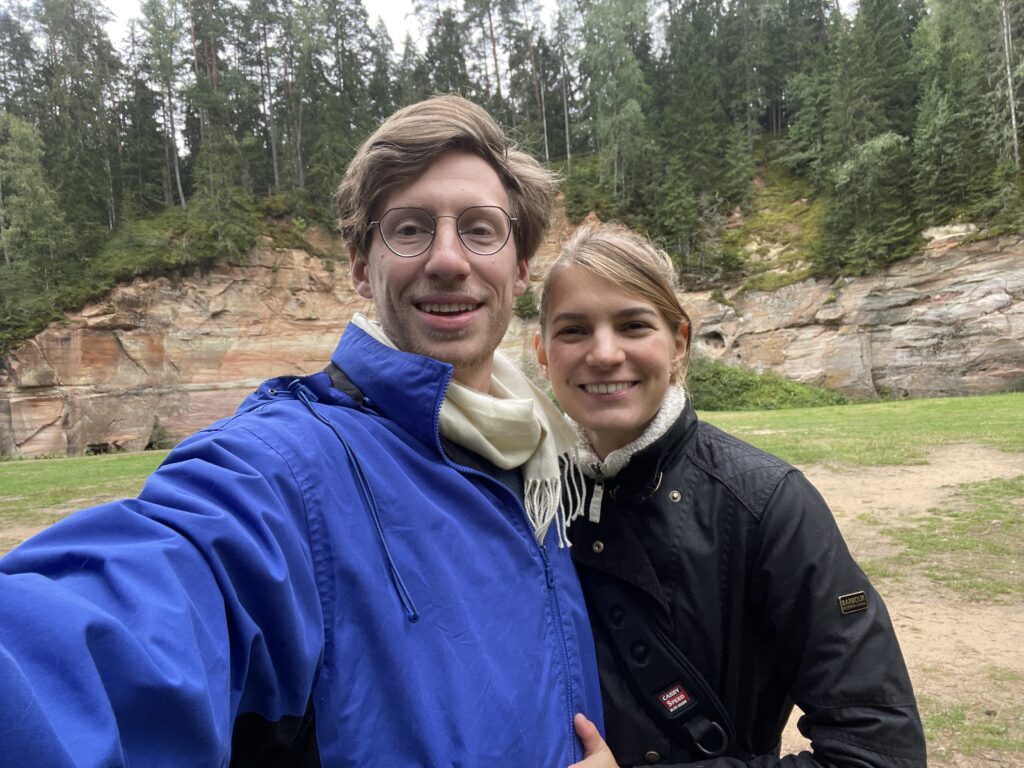
The purpose of this short note is a progress-update on our Estonian forestry ambitions. Acquiring thousands of dollars-worth of land, for a 40-year project, is not something you want to rush. My land acquisition spreadsheet is trying to optimize for about a dozen different variables. But I am pleased to be starting a first project in 2022, and have at least made some inroads towards buying a reforestation plot (video below).
To be clear, it is not a good goal to turn all of the land in the world into forests. Estonia is already about c50% forested, which is one of the highest shares in Europe (our land screen across 170 different countries is linked below). Again, selectivity is important.
Moreover, there are amazing bogs around the country, also known as “Raba”, accumulating peat in their anoxic waters, at around 1mm per annum for the past 10,000 years. So these mossy accumulations actually seem to bulge upwards and rise above the surrounding forests (video below). Step off the boardwalk, and you literally sink into the bog (you are discouraged from stepping off of the boardwalk).
These bogs are categorized alongside other blue carbon eco-systems in our data-file below. But at 1,500 tons of CO2 storage per acre, they will likely contain about 5x more CO2 than boreal forests. If you re-forest them, you actually lower carbon storage and increase the risk of forest fires (especially in South-Western Canada, although this is generally not a huge concern up here on the outskirts of Europe’s Arctic circle).
Nevertheless, Estonia’s somewhat dark history means there is also a relatively large number of abandoned properties. The video example below is on a public footpath, whereas some of the former Soviet structures we have visited or inquired on are still technically in private hands (and thus not appropriate to post on our website). Abandoned farms are the prime target for reforestation. Out of 2.5 bn hectares of degraded land globally, about 400-500M hectares is farmland that has simply been abandoned (note here). This is what I am most set on buying in the ‘walk’ phase of my reforestation ambition.
Just lower down the merit order are marginal grazing lands, which make up 70% of our recent case studies into UK reforestation projects (data below). Some of these have also been interesting to explore in our own land search.
What has seriously helped the process of appraising land for reforestation in Estonia is an amazing government data-portal. This is not a huge surprise in the world-leading country for digitization of government services. You can look up every single plot of land across the entire country, in the digitized map function here. Including their size, basic eco-system type, tax status, history and current owner details. In addition, there are the usual commercial portals online for buying and selling properties.
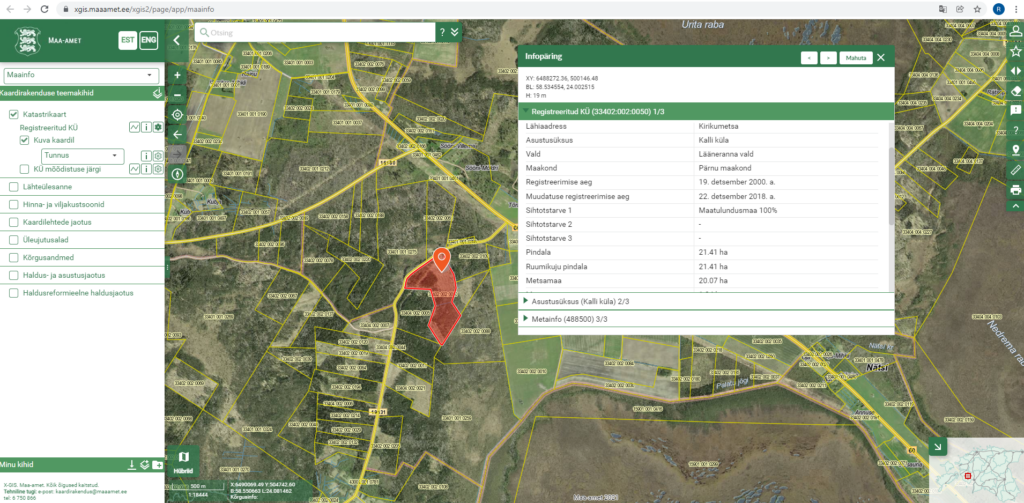
Thus has started the process of finding potentially appropriate tracts and visiting them. The example below scored well on natural reforestation potential, and is clearly not ‘in use’ as arable land. It is a 30-minute drive away. It is covered in grasses, which preclude trees from establishing. But we also discovered that it lacked road access, had been clear-felled in 2012 (which under Estonian law means it should technically have been re-planted already) and the asking price was excessively high in our view.
Meanwhile the example below was interesting, because it could join up two adjacent patches of forests on the outskirts of a Raba. But upon visiting, those forests were mainly Juniper and low-lying pine varieties, i.e., very slow-growing species, not the mixtures of Pinus sylvestris, spruce, et al that are most appropriate for carbon storage in this climate. And, unfortunately, after discussions with the owner, they were not willing to sell.
We also looked at existing forests and bio-diversity, which was not without its perils…
For the ‘crawl’ phase of exploring reforestation, however, we have already acquired 5-acres of land in Suurupi, on which we will primarily be building a house to live in. This is another reason that some TSE research has recently made forays into carbon negative construction materials, insulation, small-scale wind turbines or who makes the best heat pumps. Surrounding us is a protected forest, with 35m tall pine and spruce (video below).
However we believe that our own plot was cleared and grazed during the time of the first Estonian Republic, then abandoned during Soviet times. This is why it is constellated with a few scattered birch (a pioneer species), and otherwise human-height bushes, in a landscape that is known in Estonian as ‘võsa‘. This is dense thicket, that precludes the establishment of larger trees. The video below is taken in winter. Because at any other time of year, you cannot see anything at all. Only leaves and thorns. Indeed, in the spring, you feel the mosquitoes bite a piece out of you, and then you hear them sitting in the võsa and gnawing away. This is a land type that can be substantially improved. Both aesthetically, and in terms of carbon storage. Ultimately it can look like the carbon dense pine-spruce forest shown above, although ideally with more bio-diversity.
Hence we have cleared the võsa this winter, which will be mulched and returned to supplement the soil. The video below is taken just over the ‘border’, in the plot next door (yes, Estonia is cold in the winter).
The aerial photo below shows what was cut, and what remains, including one giant spruce, estimated to be 100+ years old and dating back to the original forest here. The idea is to plant more spruce in the spring (inter alia), which can grow well in the dappled light beneath the relatively open birch canopy. But then spruce has a tendency to shoot up in the gaps, once the birch trees reach end-of-life.
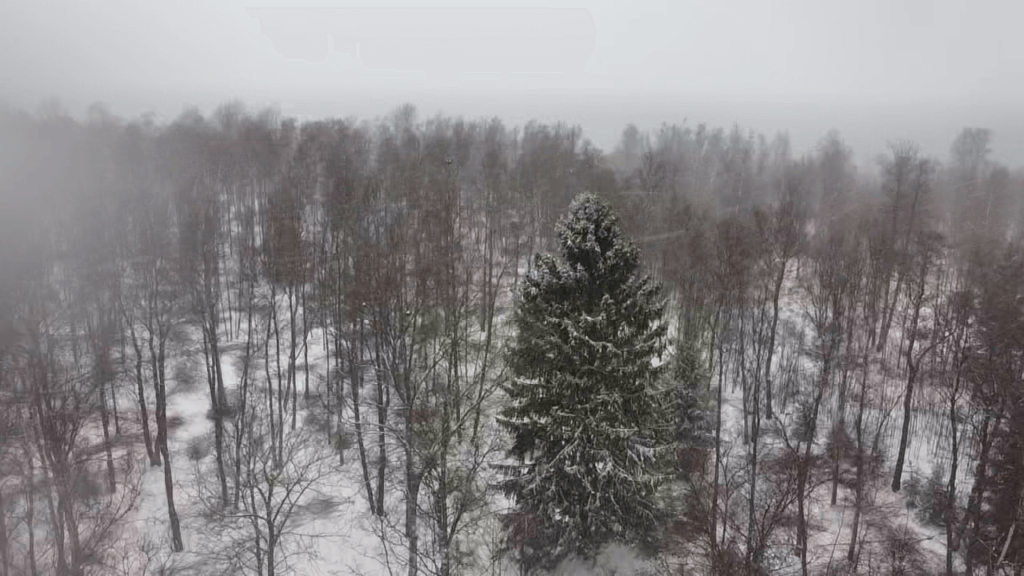
There are also clearings on the land, with only minimal võsa, where we have other options, and the chance to bring more biodiversity into the mix.
To document the process, and help appraise further prospective land parcels in 2022, we also invested in a drone. I have not yet learned to fly it convincingly.
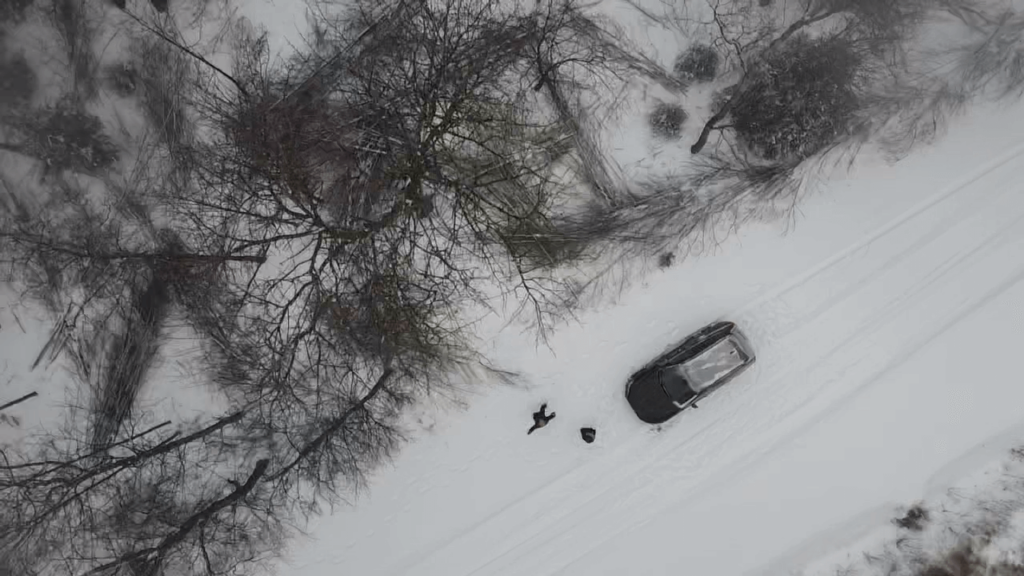
For more light-hearted content on six-months’ perspectives, living in Estonia, please see the short video below. Genuinely, please visit, if you would like a tour of some amazing Estonian forests, and our future reforestation projects.
